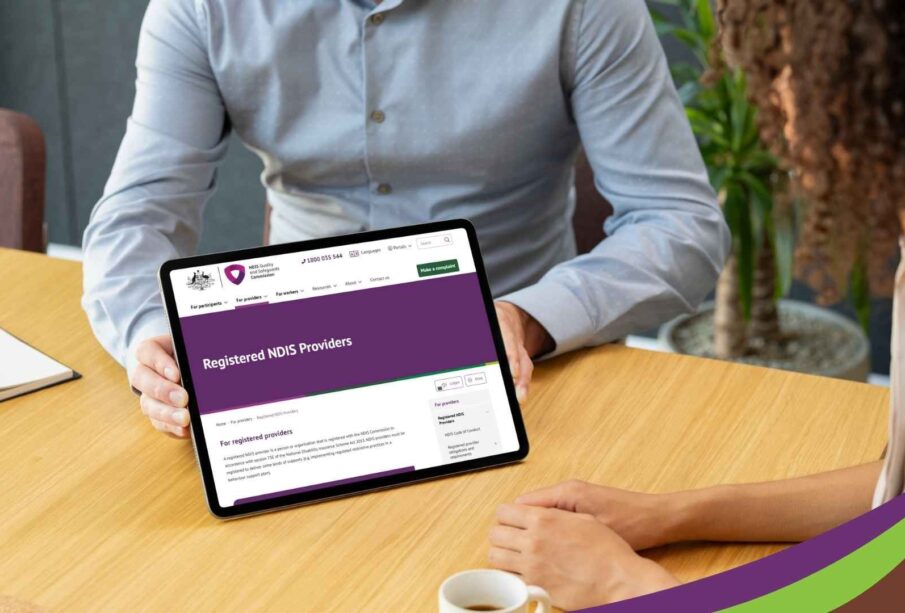How To Become An NDIS Provider: Essential Tips For Disability Sector Businesses

Considering becoming an NDIS provider but don’t know how to proceed? There are two types of NDIS providers, each with a distinct set of requirements. The responsibilities of each also differ and are specific to the business model one is operating with. For unaware people, this may sound challenging to process. The article offers an overview of the requirements and process to enlighten you on how to become an NDIS provider. But before that, have a glance at what it’s like to be a service provider.
Understanding NDIS Provider
The first step to take to learn about how to become an NDIS provider is to understand what it is. NDIS providers are the individuals, organisations or businesses that offer NDIS-funded support to participants. The providers can be sole traders, large companies, small non-profit organisations, charities or other business types. NDIS providers can get their funds depending on the participant’s fund management. There are three types of this:
- Self-managed: NDIS participants directly pay the providers after receiving the invoice. They do this through the MyPlace portal.
- Plan-managed: NDIS participant’s plan manager pays the provider as per the received invoice from the former.
- NDIA managed: Registered providers receive the payment after submission of the invoices through the provider portal. The invoices must be submitted within 90 days.
Types of NDIS Provider
NDIS providers are of two types. Learn about them to decide which one you want to go for.
Registered providers
Becoming a registered NDIS provider requires strictly meeting the NDIS standard principles and is awarded after assessment and audit from the organisation. The process involves hefty documentation and has a large setup. However, it offers a vast potential for business. It allows you to receive quick payments, be a trusted service provider, and have the opportunity to work directly with NDIA-managed participants.
Unregistered Provider
As understood, these providers are not registered with NDIS and, hence, are eligible to offer limited services to participants. Becoming an unregistered provider eliminates investment and voluminous documentation. The minimal setup can meet the needs while allowing to work with NDIS participants. Price ranges are competitive but come along with limited client access.
Requirements for Becoming an NDIS Provider
The eligibility criteria to become the NDIS provider requires the following:
NDIS Support
Businesses must be informed about the NDIS support they will be offering. They are of three types enlisted as follows:
- Core: This support ensures disabled people effortlessly complete their regular daily life activities
- Capital: The support here allows disabled people to meet complex needs, such as fulfilling the requirement of specialist accommodation or assistive technology
- Capacity building: This support helps disabled people to develop skills and become independent
Worker Requirements
The business must have a detailed list of all the individuals in the organisation. It includes the name and information of the professionals serving at the designation of CEO, board directors, staff members and other members. Another key worker requirement here is that business workers must complete the NDIS Worker Screening Check. It helps identify if the workers are fit to offer services and do not pose a risk to disabled persons.
Additional Requirements
Besides the mentioned, businesses must have with them the following:
- Australian Business Number
- PRODA account
- Familiarity of business individuals and their staff with NDIS practice standards
- Organizational details such as corporate structure, governance arrangements and locations
Becoming a Registered NDIS Provider
Proceeding with the registered option, a business would be required to follow the mentioned steps:
Step 1: Register by filling out the online application form. It will involve providing basic details, selecting the type of support to be offered by the business and uploading the documents.
Step 2: Choose and inform the type of required audit and how the business complies with NDIS practice standards.
Step 3: Complete the audit, and once it is done, the NDIS commission will assess the application. The results will be informed later.
Conclusion
Becoming an NDIS provider offers businesses the opportunity to make an impact in the disability sector. There are two options to process on the path: as a registered or as an unregistered provider. The two have their own pros and cons, along with distinct requirements.
While becoming an unregistered NDIS provider is relatively easy, the registered ones need to meet the challenging requirements to earn accreditation. Businesses can choose the right path themself or take assistance from NDIS consultants for informed decision-making.











